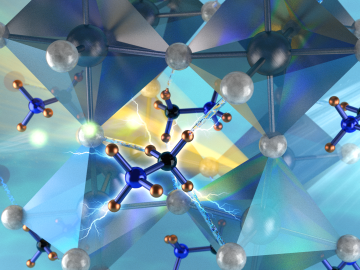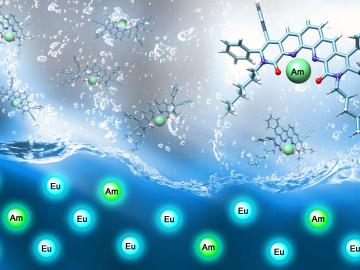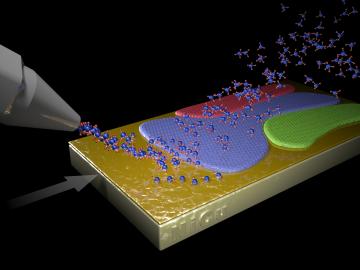
Filter News
Area of Research
- (-) Clean Energy (111)
- (-) Materials (128)
- Advanced Manufacturing (3)
- Biological Systems (3)
- Biology and Environment (60)
- Building Technologies (3)
- Climate and Environmental Systems (2)
- Computational Biology (1)
- Computational Engineering (1)
- Computer Science (2)
- Electricity and Smart Grid (1)
- Energy Frontier Research Centers (1)
- Energy Sciences (1)
- Fossil Energy (1)
- Fuel Cycle Science and Technology (2)
- Fusion and Fission (19)
- Fusion Energy (4)
- Isotope Development and Production (1)
- Isotopes (15)
- Materials Characterization (2)
- Materials Under Extremes (1)
- National Security (28)
- Neutron Science (58)
- Nuclear Science and Technology (16)
- Nuclear Systems Modeling, Simulation and Validation (1)
- Sensors and Controls (2)
- Supercomputing (96)
News Topics
- 3-D Printing/Advanced Manufacturing (19)
- Advanced Reactors (1)
- Bioenergy (4)
- Biology (2)
- Biomedical (4)
- Biotechnology (1)
- Buildings (12)
- Chemical Sciences (17)
- Clean Water (1)
- Climate Change (5)
- Composites (7)
- Computer Science (3)
- Coronavirus (1)
- Critical Materials (5)
- Cybersecurity (3)
- Decarbonization (14)
- Energy Storage (17)
- Environment (7)
- Fossil Energy (1)
- Fusion (3)
- Grid (15)
- Hydropower (1)
- Irradiation (1)
- Isotopes (8)
- Machine Learning (1)
- Materials (44)
- Materials Science (16)
- Mercury (1)
- Microelectronics (1)
- Microscopy (7)
- Molten Salt (1)
- Nanotechnology (9)
- National Security (2)
- Net Zero (1)
- Neutron Science (12)
- Nuclear Energy (7)
- Partnerships (9)
- Physics (13)
- Polymers (7)
- Quantum Computing (2)
- Quantum Science (1)
- Renewable Energy (1)
- Security (3)
- Simulation (2)
- Space Exploration (2)
- Summit (1)
- Sustainable Energy (6)
- Transportation (17)
Media Contacts

A shield assembly that protects an instrument measuring ion and electron fluxes for a NASA mission to touch the Sun was tested in extreme experimental environments at Oak Ridge National Laboratory—and passed with flying colors. Components aboard Parker Solar Probe, which will endure th...

Christina Forrester’s meticulous nature is a plus for her work leading technical testing and analysis of radiological and nuclear detection devices, whether that work takes her to the Desert Southwest or to her own lab outfitted with specialized



Oak Ridge National Laboratory today welcomed a second group of technology innovators to join Innovation Crossroads, the Southeast’s only entrepreneurial research and development program based at a U.S. Department of Energy national laboratory. Selected through a me...


Leveraging his expertise in image processing, sensors, and machine learning, Vincent Paquit is devising a control system for additive manufacturing to produce 3D-printed parts that function as well as conventionally produced objects. Paquit’s research sits at the junction of manufacturing technol...

A scientific team led by the Department of Energy’s Oak Ridge National Laboratory has found a new way to take the local temperature of a material from an area about a billionth of a meter wide, or approximately 100,000 times thinner than a human hair. This discove...

A new method to produce large, monolayer single-crystal-like graphene films more than a foot long relies on harnessing a “survival of the fittest” competition among crystals. The novel technique, developed by a team led by Oak Ridge National Laboratory, may open new opportunities for growing the high-quality two-dimensional materials necessary for long-awaited practical applications.

Last November a team of students and educators from Robertsville Middle School in Oak Ridge and scientists from Oak Ridge National Laboratory submitted a proposal to NASA for their Cube Satellite Launch Initiative in hopes of sending a student-designed nanosatellite named RamSat into...


